The advancements made in the dash cam industry have been amazing to see in the past few years. They are no longer low-res, narrow views – but they are high definition, clear, and use artificial intelligence to monitor all aspects of driving.
There are many types of dash cams, but it can be hard to know what the best cam would be for your fleet – there are so many options! In this article, we will discuss the types of dash cams and which ones may be right for your fleet.
Why Should You Get Dash Cameras for Your Fleet Vehicles?
Now, if you manage a fleet – you might be asking why you would need a dash cam? Simply put – safety.
This is a way for you to ensure that your drivers are operating vehicles safely. Newer dual-facing dash cams can monitor drowsiness and distraction. They can alert the driver in the cabin to let them know that they are not focusing as they should. Dash cams are also one of the best ways to prevent your business from a false claim in the event of an accident.
Below are just some of the benefits of installing dash cams:
- Protect drivers from false claims
- Decrease insurance costs
- Prevent accidents before they happen
- Decrease vehicle wear and tear
- Improve coaching capabilities
- Reduce labor cost
- Use the footage to motivate drivers with positive reinforcement
It is important to note that not all dash cams are fit for commercial use with fleets. Consumer versions might not have all of the features that your fleet needs. Call on our fleet management team to recommend the best system for you then install and maintain it too. We’re at your service to support your growing business.
Different Types of Dash Cameras
Front Dash Cams
These are mounted on the windshield and record the road in front of the vehicle. These are made to capture collisions on the road ahead. It can protect drivers from false claims. They do not record inside of the cab.
Exterior Dash Cams
These are mounted outside of the vehicle, usually to the side. They record the area around the vehicle. These cams provide a 360-degree view around the vehicle. These are especially helpful when the driver has blind spots to navigate. These are useful for fleets that deal with multiple side-swiping accidents.
Rear Dash Cams
These are mounted on the outside of the vehicle, usually near the license plate. These cameras record behind the vehicle. These are typically used to aid drivers while backing up and knowing what is behind them.
Interior Dash Cams
These are mounted inside of the vehicle and they record inside of the vehicle. These cameras can be placed inside the cabin and inside the trailer of the vehicle. They are great for protecting cargo and keeping passengers safe. This is a big plus for shuttle services or other courtesy vehicles to make sure that your clients are getting the best experience.
Dual-Facing Dash Cams
These are mounted on the windshield and they record the road in front of the vehicle and the driver inside of the cabin. These cameras record the road ahead, but they also have a second camera that faces inside of the vehicle. These cameras are usually equipped with software that can capture driver behavior and alert to drowsiness or distracted driving.
What to Look for When Choosing a Dash Cams for Company Cars
- Internet Connectivity – You want to make sure that you have a cam that doesn’t run out of space and records over older footage. If you have a cam with internet connectivity, it can upload footage to the cloud immediately and store it there for however long you need it. Internet dash cams are more convenient and reliable.
- Driver Monitoring Features – If your cam has a driver monitoring system, it can analyze driver behavior in real-time. This is particularly useful for safety, training, and accident prevention.
- In-Cab Coaching- In-cab audio features will alert drivers to unsafe behaviors from inside of the cab.
- Automatic Event Detection – It’s important to choose a dash cam that connects to your fleet management system. It can pick up safety events like speeding and collusions. It will immediately send footage to your safety team for review.
- High-Quality Imagery – You definitely want to have sharp imagery from whatever dash cam you get. Choose a wide-angle lens with at least 1080p HD video.
- Easy-to-Install – If you’re adding these cams to a whole fleet, you want something that will be easier to install. We suggest choosing something that’s flexible and can fit different vehicles. Remember to choose a company with good customer service like us so we can troubleshoot any problems that might arise and keep your team on the road.
Installing Dash Cams for Fleets
Whatever you choose for your fleet, we hope you come away from this knowing that dash cams have quickly become an essential part of safety for your fleet.
Butler Automotive Management services all of Tampa Bay and we’re here to help support your internal fleet management team, or serve as your remote fleet managers. Contact us today to see how we can improve your business operations and bottom-line.





